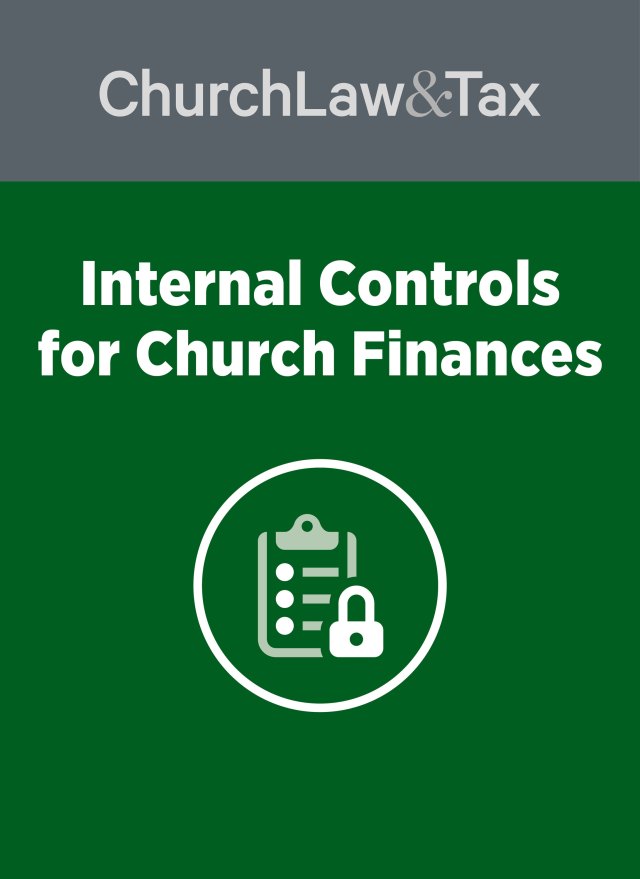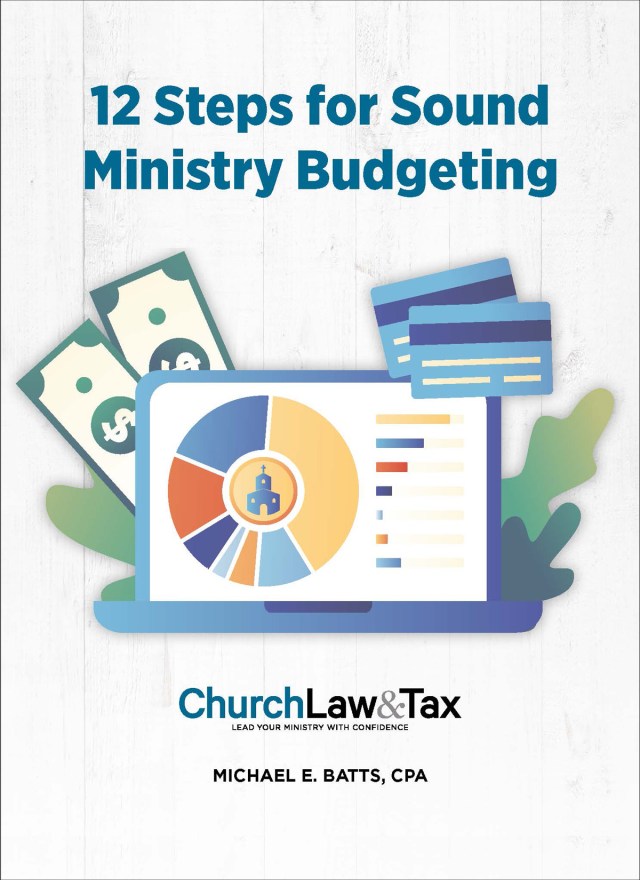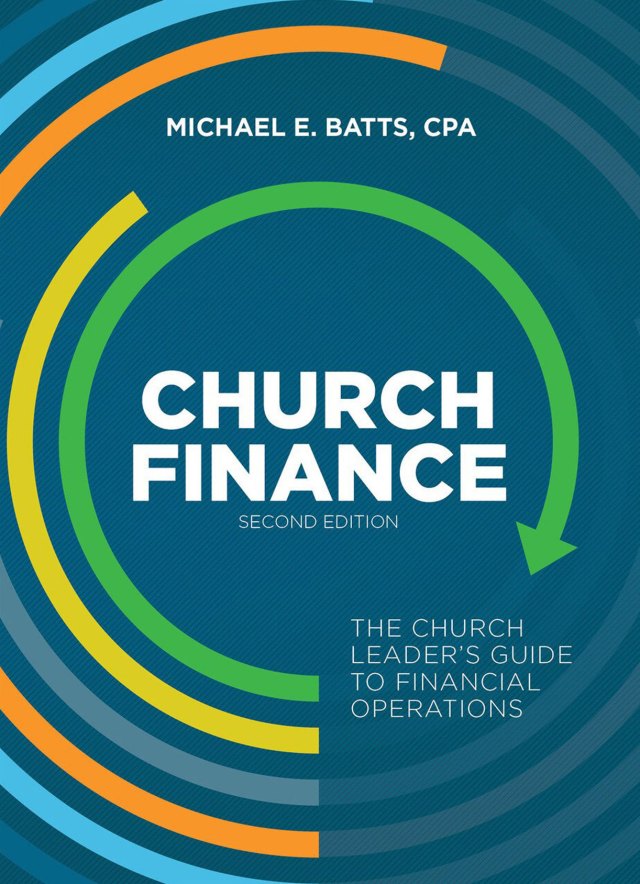Background
The Association of Certified Fraud Examiners (ACFE) estimates the "occupational fraud" costs employers close to 400 billion in 2019. What is occupational fraud? Any use by employees of their job for "personal enrichment through the deliberate misuse or misapplication of the employing organization's resources." This definition covers a range of activities, including "payroll fraud," theft, fraudulent invoices, overstated and fictitious business expenses, multiple reimbursements of the same expenses, and overstated wages.
Nonprofits, like churches, are not immune from occupational fraud. Quite to the contrary, the ACFE 2020 report stated, “Nonprofit organizations have fewer anti-fraud controls in place, leaving them more vulnerable to fraud.” The report pointed out that the top three weakness for nonprofits were lack of internal controls, lack of management review, and override existing internal controls. Add to that the tendency for churches to feel that oversight shows a lack of trust and you’ve got a setup for potential theft. Such assumptions can be dangerous, as a recent case illustrates.
Suspicious activity
For more than a decade, a man ("Ken") was employed as the building superintendent for a large church. Ken supervised the church's custodial staff and was responsible for overseeing the cleaning, maintenance, and repair of church property. Ken was responsible for approving employee time sheets and vendor invoices. Each week, he would fill out the payroll sheet with the number of hours worked by each employee, sign and approve the hours, and submit the sheets to the church bookkeeper for payment. The bookkeeper would generate the checks based on the number of hours listed on the payroll sheets, obtain signatures on the checks from the church treasurer, and leave the signed checks for Ken to distribute. Ken was also responsible for approving vendor invoices and submitting them to the bookkeeper for payment. The bookkeeper mailed some of these checks to the vendors directly, but held approximately 95 percent of the checks for Ken to pick up and distribute himself.
The bookkeeper first began handling the church payroll in 1993. At that time, she did not recognize two names on the payroll list, even though she had worked 50 to 60 hours a week at the church for nearly four years, and knew the other employees listed on the payroll. Payroll sheets indicated these two individuals were full-time employees who had earned overtime in addition to their weekly wages. She questioned Ken about these two employees. He said they were his brother-in-law and stepson who worked "at night and on the weekends." The bookkeeper did not question Ken again, but, after the initial confrontation, one of these two "employees" began emptying the bookkeeper's office trash can every evening. This employee was paid $150 a month in cash for working only a few hours each week. Over the course of several years, 355 payroll checks were issued to this employee, and each contained a forged endorsement.
Two other church members discovered that several payroll checks had been issued to them by the church, even though they had only worked a few hours on a couple of occasions, and their signatures had been forged on each check. One of the members discovered that the church had issued 23 payroll checks in his name in a total amount of nearly $20,000, and that his signature had been forged on each one. The total amount of Ken's fraud was staggering, although the exact amount will never be known.
Appeals court: “evidence overwhelmingly supports the verdict”
The church began investigating Ken. During that investigation, an associate pastor searched Ken's office and desk, and found blank invoice forms, letterhead created from a vendor's business card, and 1099-MISC tax forms that had not been delivered to the appropriate vendors. Ken was arrested and charged with various crimes. Following the arrest, the church hired an attorney to prepare an insurance claim for the church based on the losses caused by Ken's thefts. The church ultimately received a $250,000 insurance settlement, the entire value of the policy.
Ken was convicted of theft and sentenced to 16 years in prison. He appealed his conviction on the ground that the evidence was not sufficient to support a conviction. A state appeals court disagreed:
The evidence overwhelmingly supports the verdict. Ken did not testify and presented no evidence to contradict the state's evidence. The evidence showed that Ken, as building superintendent, was responsible for approving all time sheets and vendor invoices. He falsified these time sheets and invoices, cashed checks made out to employees who did not work at the church for the amount of hours indicated on the time sheets, and kept the money for himself. The jury heard the evidence, examined the exhibits, and reasonably concluded that Ken had indeed falsified church records, cashed checks derived from those false records, and kept the money for himself.
The court noted that three persons had testified that payroll checks had been issued in their names, and that their signatures on those checks had been forged. Moreover, the testimony of the bank tellers supported the testimony of these "employees" that they did not receive money from those checks because Ken came into the bank alone when he cashed them, and his signature was on each check.
The court rejected Ken's argument that a 16-year prison sentence was excessive: "The evidence showed that Ken had deceived and defrauded the church for years, and during the course of that fraud helped his friends and family by hiring them to do work at the church. The evidence also showed that Ken received sexual favors in return for paying false invoices. This evidence supports the jury's assessment of sixteen years confinement."
What this means for churches
Ken's scheme was to have his church issue payroll checks to "fictitious employees." This is one category of "occupational fraud," since Ken was using his job for his "personal enrichment through the deliberate misuse or misapplication of the employing organization's resources." Here are some points for church treasurers to consider.
1. Risk to churches
As noted above, churches are not immune from occupational fraud. In fact, they are at a greater risk because many have implemented no "internal controls" to minimize the risk of fraud, and most have employees who know each other very well and consider accounting controls to be intrusive and unnecessary. This environment can lead to fraudulent activity.
2. Other types of occupational fraud
Issuing checks to fictitious employees is but one example of occupational fraud. Another example is for an employee to have the employer issue checks based on fraudulent invoices, as Ken did.
3. Difficulty of detection
Occupational fraud usually is carefully planned, and is very hard to detect. The most common basis for detecting fraud is a tip from another employee.
4. Criminal prosecution
Occupational fraud, of whatever category, constitutes a crime under state and possibly federal law. There is a common belief that employers will not prosecute employees for fraud. While the employee may be fired, the employer will not attempt to have the employee prosecuted. But the ACFE report shows that nearly 60 percent of all employers turn cases of occupational fraud over to law enforcement. How are such cases resolved? Fifty-six percent pleaded guilty/no contest, 23 percent were convicted at trial, and only 2 percent were acquitted. While these statistics apply to employers generally, and not churches, they are relevant to church leaders in making informed decisions on handling cases of occupational fraud.
5. Insurance
Occupational fraud is a risk that is not covered by conventional property or liability insurance policies. Check with your insurance agent to discuss adding this as an endorsement to your existing policy. This coverage is sometimes called "fidelity" insurance. It covers various forms of criminal behavior by employees, including embezzlement, forgery, dishonesty theft, computer fraud, and similar acts. Church leaders should be aware that insurers may vigorously pursue legal remedies against employees who obtain funds or assets through fraud or embezzlement. So, the fact that your church decides to "forgive" an employee who embezzles church funds will not end the employee's potential troubles. Far from it. In addition, the IRS will relentlessly pursue employees who embezzle funds, since few of them report their ill-gotten gains as taxable income on their tax return!
6. Bank liability
If the church in this case had not carried insurance to cover employee fraud, could it have recovered its losses from the bank that accepted the payroll checks for deposit over the signatures that Ken forged? The answer is no. The Uniform Commercial Code (UCC) governs checks and other negotiable instruments in every state except Louisiana. Section 3-405 of the UCC contains the so-called "padded payroll" rule. This rules assumes that employers are negligent whenever an employee cashes checks to fictitious employees, and so they (rather than the bank) must bear the loss. In rare cases, an employer may be able to recover if it can prove that the bank was negligent. But this is a difficult task that is rarely successful.
7. CPA audits
If a church has an annual audit by a CPA firm, will this eliminate the risk of occupational fraud? While an audit can reduce the risk, it will not eliminate it. Employees who engage in fraud go to great lengths to conceal it, and this makes if difficult if not impossible for auditors to discover it. However, an audit will result in recommendations by your CPA firm regarding "internal control" procedures that will help to reduce the risk of fraud.
8. Risk management
What steps can your church take to reduce the risk of payroll fraud and other forms of occupational fraud? Consider the following:
- Before hiring an employee, contact the persons' former employers for a reference. Also, consider criminal records checks and credit checks.
- Be sure that no one is placed on your payroll without authorization. Have the preparation of payroll and the actual paying of employees handled by different persons.
- Examine all invoices and supporting data before signing checks. Make sure that all merchandise was actually authorized and received, and that the price was reasonable. In many false purchase schemes, the embezzler neglects to make up receiving forms or other records purporting to show receipt of merchandise. Cancel all invoices at the time you sign the check to prevent double payment.
- Examine paychecks for Social Security or income tax withholdings. Payroll checks issued to fictitious employees usually do not include these withholdings, and so this is often your best evidence of payroll fraud.
- "Direct deposit" wages into employees' bank accounts.
- Periodically hand deliver payroll checks to employees, and require personal identification. If you have any paychecks that were not delivered, retain them until the employees return to work and then personally deliver them.
- Monitor budget variances in your payroll expenses. Negative variances may be in indication of payroll fraud.
Johnson v. State, 2001 WL 748175 (Tex. App. 2002)




